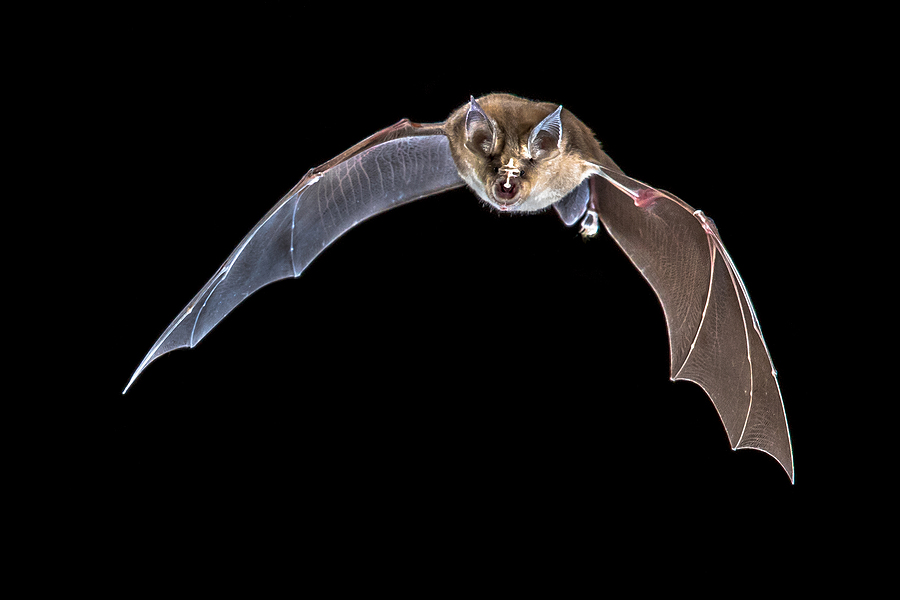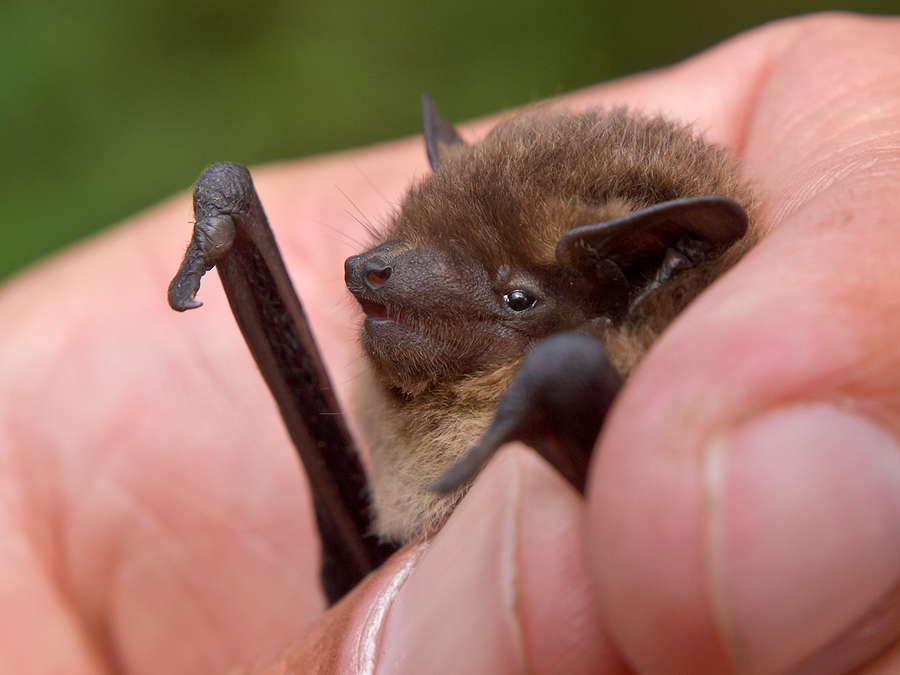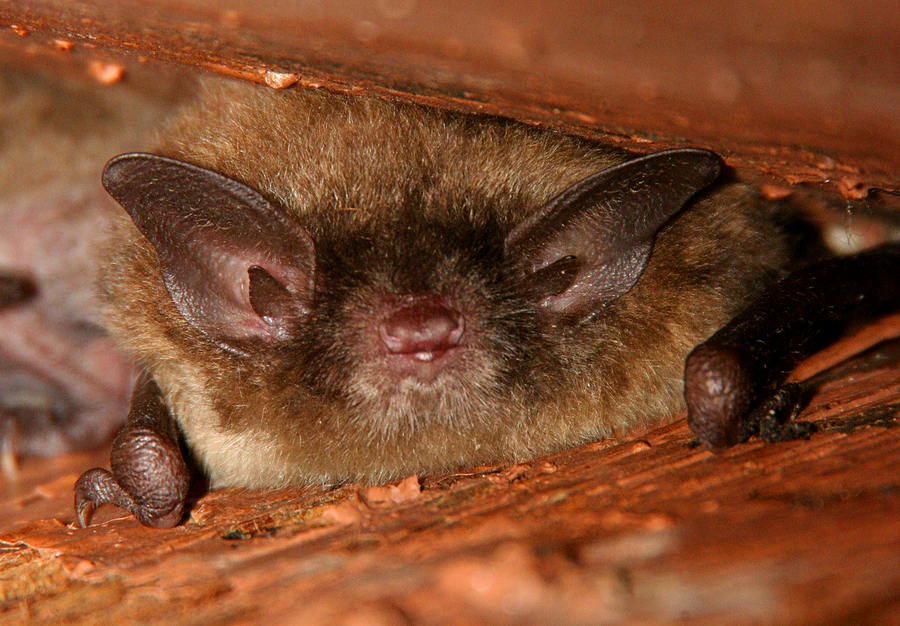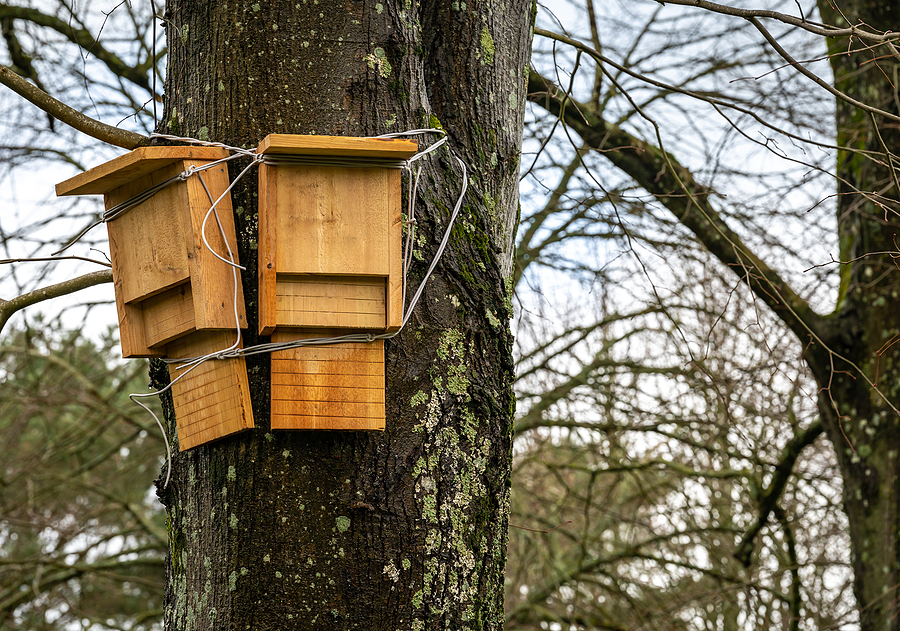In the silent twilight hours of Northern Indiana, an array of bat species takes to the skies in search of food and mates. These captivating creatures, shrouded in mystery and often misunderstood, lead an intriguing nocturnal life that is ripe for exploration.
In this blog, we’ll delve into the unique behaviors of Indiana bats, unpacking the reasons behind their nightly escapades and the distinctive traits that set different species apart. Join us as we embark on this fascinating journey, peeling back the veil of the night to reveal the unseen world of these remarkable flying mammals.

Bat Species in Indiana
The state of Indiana is home to a wide variety of bat species, including the endangered Indiana bat. This particular species was listed as an endangered animal in 1967 and has since experienced considerable conservation efforts. The Indiana bat is also known for its shorter wingspan than other species, usually measuring between 7 and 9 inches across. Additionally, these nocturnal mammals are notable for their migratory behavior, traveling up to 500 miles round-trip during their annual migration.
But the Indiana bat is just one of many interesting species that can be found in Northern Indiana. Other bat populations include the Big Brown bat, Red bat, and Silver-Haired bat. Each of these species exhibits its own unique characteristics and behaviors, allowing us to gain a better understanding of the nocturnal habits of bats in the area.
Bat Activity
When it comes to their daily activities, bats typically begin their night by emerging from their roosts around dusk. During this time, they may forage for food, or engage in mating and social behaviors such as hunting together in groups. Bats have an incredibly diverse diet, dining on everything from insects to fruit and even the occasional mouse. Studies have shown that bats are capable of eating up to 1000 insects in a single hour, making them important predators for keeping insect populations in check.
Bat Habitats
We can also learn a lot about bat behavior by studying their roosts. Bats use roosts as a place to rest, socialize, and even raise their young. Roosts can range from crevices between tree bark to buildings, depending on the species and its needs. During the day, bats will usually rest in these roosts, reducing their body temperature and conserving energy for their nighttime escapades.
Bat Echolocation
Finally, one of the most important behaviors that bats exhibit is echolocation. This is a remarkable sonar ability that bats use to locate prey and navigate their environment at night. Bats have special organs in their head that emit high-frequency sound waves, which bounce off of nearby objects and return to the bat. By listening for these echoes, bats can determine where they are and identify potential food sources with incredible accuracy.
Tips for Safe Bat Control
Though bats are fascinating creatures, they can be a nuisance if they enter human dwellings and roost inside. If you’re experiencing a bat infestation in your home, there are a few simple measures that you can take to handle the situation safely. Here are some tips for safe bat control:
☑ First of all, it’s important to ensure that all of your doors and windows are closed securely, as open entryways can be an invitation for bats to come inside.
☑ If you do find a bat in your home, don’t panic – bats are more afraid of humans than we are of them! To remove the bat safely, simply open a window or door in the same room and wait until it flies out.
☑ If the bat doesn’t seem to be leaving, it’s best to call an expert for help. A professional bat removal specialist will be able to safely remove the bat without harming it.
By following these tips and being aware of their environment, you can ensure that both bats and humans alike remain safe in their respective habitats.
Final Thoughts
Through careful observation of bats in their natural environment, we can gain a better understanding of these remarkable creatures and the nocturnal habits that make them so unique. The next time you spot a bat on a night-time stroll through Northern Indiana, take some time to appreciate its fascinating behavior and the secrets it holds about the hidden world of nocturnal animals.
Are you dealing with an increasingly risky bat population on or around your Indy property? Contact us today at 317-535-4605for professional Indianapolis bat removal services you can afford. We are DNR licensed and insured, serving both residential and commercial clients all throughout Central Indiana.
Related Posts:
Never Attempt to Remove Bats By Yourself
3 Smells That Can Repel Nuisance Bats
Top 3 Reasons Why Bats are Ecologically Important



